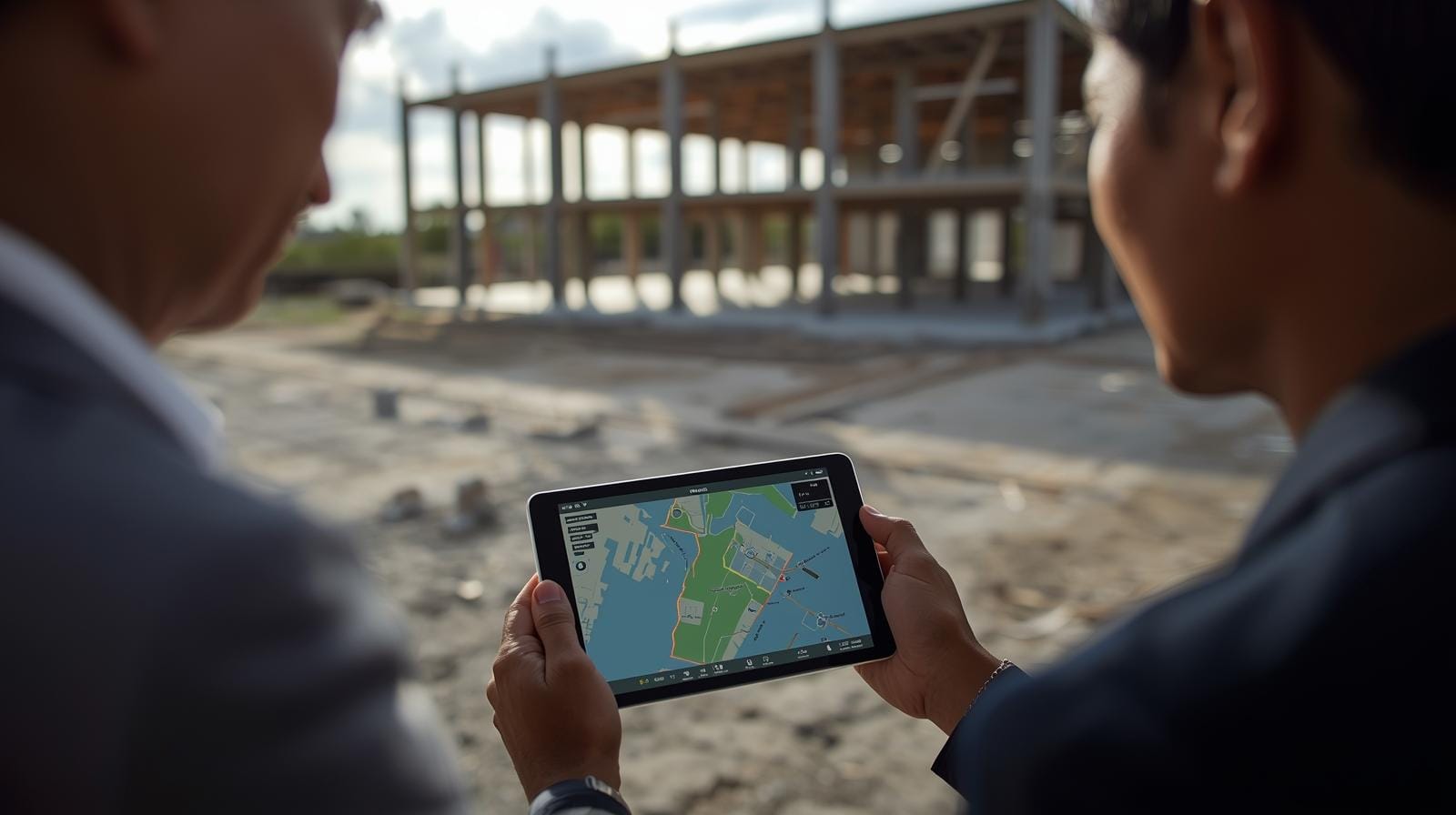Thailand has just moved from talking about the digital economy to writing real cheques. In November 2025, the Board of Investment approved four new data centre projects worth around US$3.1 billion, including an 84-megawatt facility by DAMAC Digital and a 200-megawatt hyperscale project led by a local investor. At the same time, earlier commitments from AWS and Microsoft to build Thai cloud regions are starting to crystallise into land, generators and substation upgrades rather than press releases.
On paper, the timing looks perfect. Thailand’s data centre industry is still relatively small — roughly US$1.5–1.6 billion in 2024, but projected to grow 7.5–8.5% per year through 2027 as government agencies and corporates digitalise, and AI workloads explode. The government wants a slice of the regional AI and cloud boom that has so far concentrated in Singapore and, increasingly, Malaysia’s “AI park” corridor.
The opportunity is obvious. The question — and the one this article tackles — is whether Thailand’s land, power and regulatory stack can support this new capacity without mispricing risk for investors or over-promising to tenants.

BOI’s Bet: Incentives, Ownership and the New Project Wave
Thailand’s BOI has quietly made data centres one of its most investor-friendly categories. Under activity 8.2.1, qualifying projects can secure up to eight years of corporate income tax exemption, duty-free import of machinery, 100% foreign ownership and land ownership rights — a significant departure from the Foreign Business Act’s usual restrictions.
Crucially, these incentives are aligned with a broader push under Thailand 4.0 and the Digital Economy and Society plans to anchor more of the cloud stack onshore, especially in the Eastern Economic Corridor (EEC) and Bangkok’s expanding outskirts.

Land, Power and Location: Where the Racks Really Go
Investors used to reading about Phuket villas or Bangkok holiday homes converted into Airbnb retreats need to mentally shift asset class. Data centres sit closer to ports and industrial zones than to BTS stations and river views — but land pricing dynamics are just as political.
Three land realities dominate current deals:
- Power first, land second. Hyperscale tenants will walk from any site that can’t guarantee multi-phase ramp-ups of power, ideally with renewable sourcing options and clear grid upgrade timelines.
- Elevation and flood resilience are non-negotiable. Bangkok’s own flood risk — with estimates that up to 40% of the metro area could face inundation risk by 2030 — forces serious players to model water, not just rent.
- Competing industrial uses. Data centres now bid against logistics parks, EV plants and supplier parks in the same EEC corridors where land prices have already surged double-digits in recent years.



If you want intelligence, not hype, join the readers who rely on The Thailand Advisor for grounded, data-driven insight into where Thailand’s digital infrastructure is actually going.
Regulatory Edge: Ownership, Tax and PDPA Compliance
From an investor’s standpoint, Thailand’s legal framework is more permissive than many outsiders assume:
- BOI-promoted data centres can be 100% foreign-owned, with land rights and foreign specialist work permits bundled into the promotion package.
- Incentives typically include eight years of corporate income tax exemption and duty-free imports of servers and cooling equipment — material for any hyperscale operator’s IRR.
- At the same time, the Personal Data Protection Act (PDPA) and sectoral rules (finance, telecoms, critical infrastructure) are tightening data residency expectations, favouring onshore rather than cross-border hosting for sensitive workloads.
Where Thailand does look more complex is in the regulatory layering: energy rules, environmental approvals, local zoning, telecom licensing and, increasingly, cyber-security oversight. The country has deliberately kept data centre-specific zoning light, but Tier III availability, ISO/IEC 27001 and environmental impact assessments quickly become de facto requirements for serious projects.


If you’re already benchmarking LTR-linked real estate or foreign business reforms, you should be running the same comparative lens on Thailand vs Malaysia vs Singapore for data centre siting.

Ready to take your next step in Thailand?
Connect with vetted local experts for visas, company setup, or property — no spam, no hidden fees.
Many readers have already found trusted local partners through our network.
The uncomfortable truth is that Thailand’s biggest advantage isn’t its incentives or its mid-market land prices — it’s being slightly late. By watching Singapore’s over-capacity scares and Malaysia’s rapid AI park buildout, Thai regulators and utilities can cherry-pick what worked, sidestep the most obvious mistakes, and structure BOI promotions and power deals that reward genuine long-term operators instead of speculative “flip the shell” developers.
Risk, Resilience and the Cost of Getting it Wrong
The real risk here is that investors treat data centres as just “tech-flavoured warehouses” in a market they assume is as forgiving as hospitality. It isn’t. A single mispriced risk — a substation delay, a mis-modelled flood plain, a cyber-security incident, or a new rule on cross-border data — can torpedo tenant confidence and lock in years of under-utilised capacity.
Thailand’s wider policy environment has already shown its ability to swing hard and fast — from visa-linked banking freezes to SIM and anti-scam crackdowns that reshaped digital nomad behaviour. Anyone building 20-year infrastructure in this context needs to assume regulatory volatility, not stability, and price it accordingly.

Micro Case Study — The Quietly Delayed Campus
Consider a (generalised) case: a regional operator acquires 50+ rai near an EEC substation, targeting a 60 MW campus. The BOI application sails through; the land SPV closes; tenants sign non-binding term sheets. But two non-obvious issues emerge:
- The local grid upgrade depends on a separate industrial estate’s expansion that slips behind schedule.
- New environmental guidelines demand deeper assessment of water usage and waste heat, adding 12–18 months of paperwork.
Capex is committed, but revenue is pushed out. Holding costs, interest and opportunity cost climb. In a more liquid market, the developer could flip the site, but Thai buyers are limited and hyperscale tenants are wary of late delivery. On paper this is still a “good” project; in practice, it becomes a drag on the balance sheet.

- Policy: Sudden shifts in digital, tax or FDI rules
- Infrastructure: Grid upgrade delays, flood resilience gaps
- Regulatory: PDPA enforcement, sector licences, ESG
- Market: Tenant concentration, oversupply pockets
From a policy-economics lens, Thailand’s data centre gambit looks like a lever to rebalance the growth story away from pure tourism — a theme you’ve already seen in our coverage of tourism’s limits, EV bets and foreign business reforms. The difference this time is that cloud infrastructure locks in long-term tenants and power offtake in a way hotels and retail never could; get it right, and Thailand earns annuity-like revenue streams and strategic relevance in AI supply chains, not just another seasonal spike in arrivals.
Positioning Yourself in the Data Centre Economy

Most TTA readers are not going to pour a billion baht into chilled aisles and diesel tanks. But the data centre buildout still matters to:
- Property investors looking at Bangkok’s outskirts, the EEC and secondary logistics corridors, where land values may re-rate as power-dense assets cluster.
- Founders and corporates deciding on entity structures and BOI strategies, where data centre tenancy or co-investment can tilt the foreign-ownership equation in their favour.
- Global citizens pursuing LTR or other long-stay visas, for whom proximity to Thai cloud regions will shape where remote work, AI startups or digital asset businesses can operate with low latency and regulatory comfort.



Thailand is pouring billions into data centres, but only investors who understand land, power and policy risk will turn this cloud boom into durable returns.
Share this article:
#TheThailandAdvisor #ThailandDataCentres #ThailandInvestment #EEC #BangkokProperty #ThaiEconomy #CloudComputing #AIinThailand
Caption: Share this article to bring clearer, risk-aware thinking to Thailand’s data centre boom.









